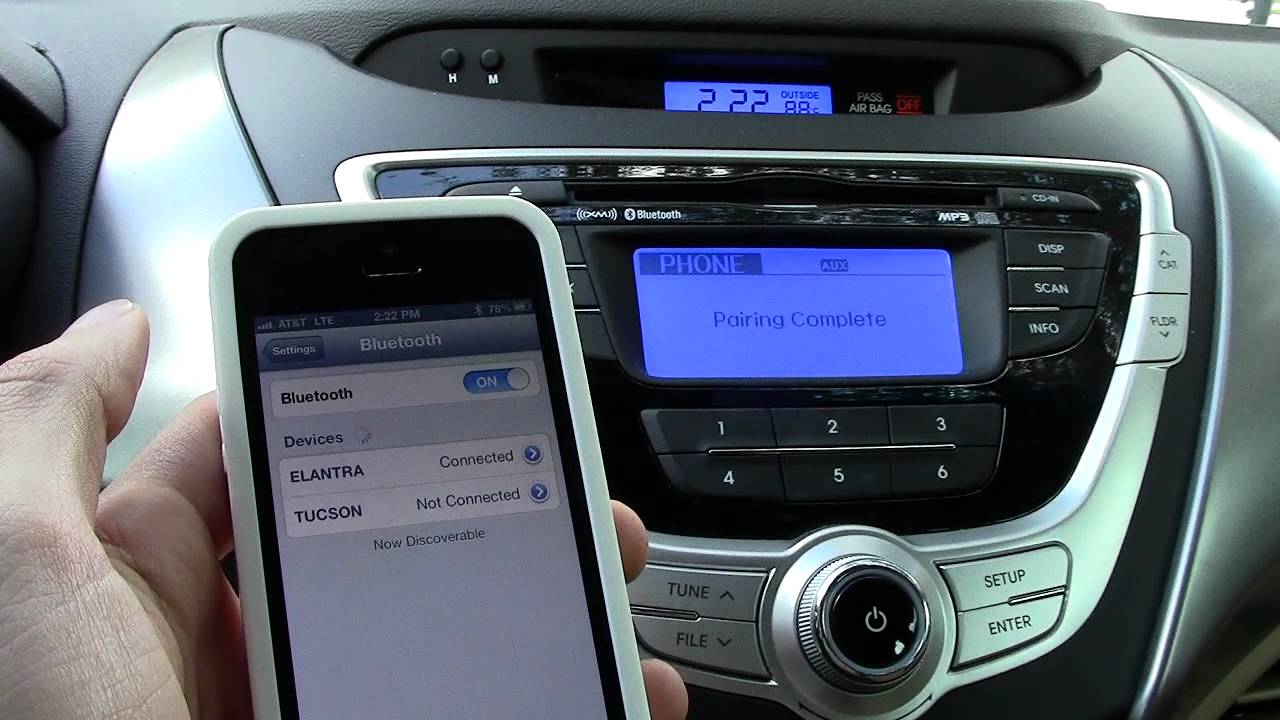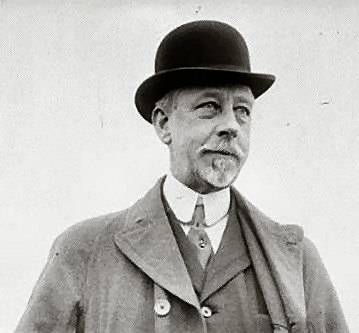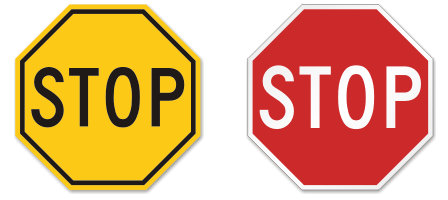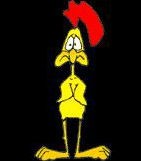|
|
||
|
||
|
Privacy Policy | Editorial Policy | Profit Policy | Join the Association | List of Members | Contact us | Index | Links |
||
|
Back Go to page: 1 2 3 4 5 6 7 8 9 10 11 12 13 14 15 16 17 18 19 20 Forward
|
||
|
Out in the Shed with Ted.
Ted McEvoy. |
||
|
|
||
|
Click the pic above to access the Kedron Wavell Services Club web site.
|
||
|
Welcome to Kedron-Wavell Services Club. Located in the vibrant Chermside precinct, only 15 minutes north of Brisbane’s CBD, the Club is Brisbane’s award winning, premier function, entertainment and leisure destination.
With a cosmopolitan atmosphere and elegant features, Kedron-Wavell Services Club is the perfect place to meet your family and friends… or meet new friends! They’re easy to find and offer free off-street parking for members and guests. |
||
|
Contents.
How to disable/enable "Tap to Click". The Big Bang - the recent one. TPI/EDA free travel on Public Travel in Victoria
|
||
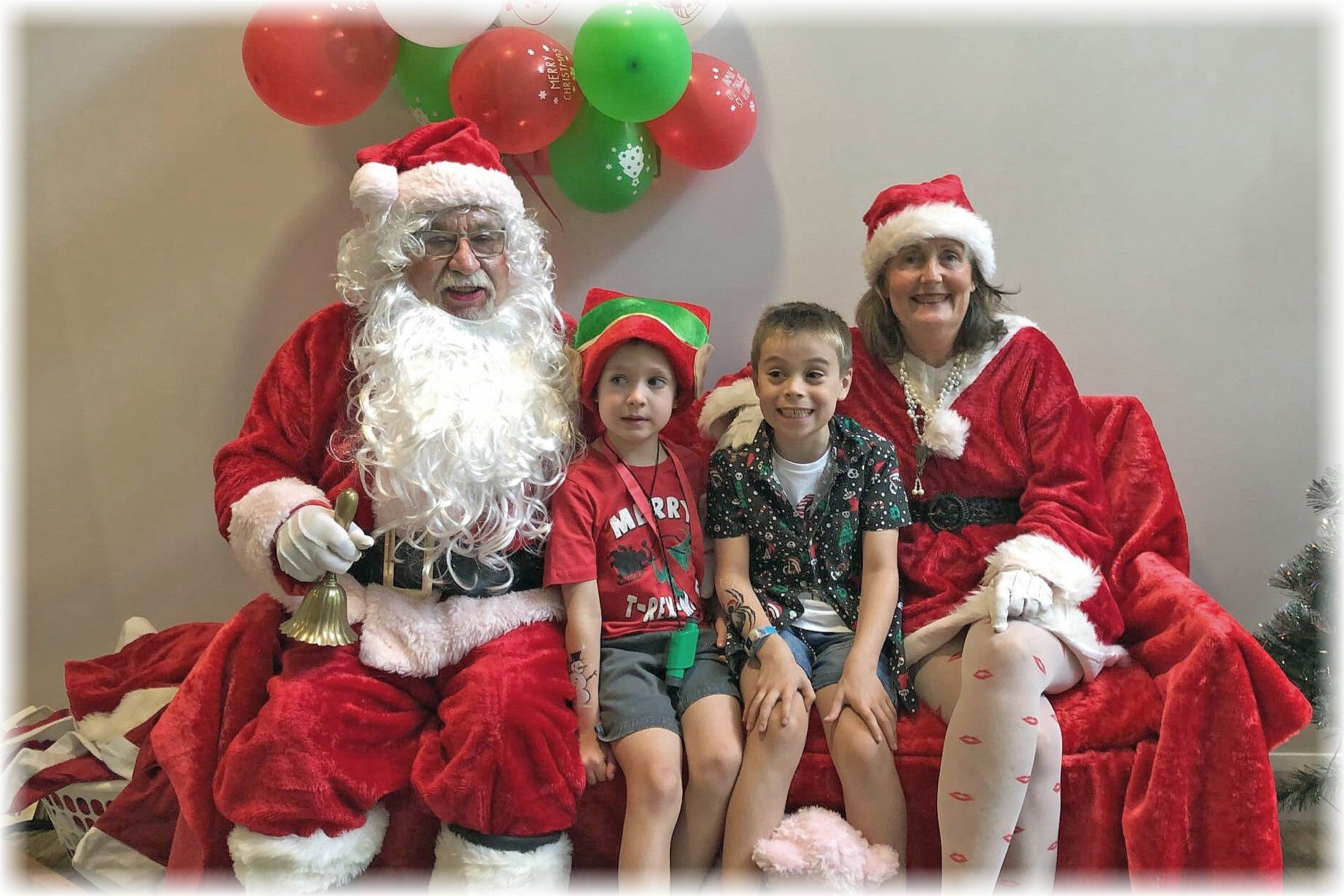 |
||
|
Mother Christmas and I would like to wish all you earthlings a happy and healthy Christmas and may the New Year see you fit and well, and if you're of that ilk, may it be a prosperous one too.
Santa Ted.
|
||
|
The 31st October is Halloween Day – ever wondered why?
It’s a great day for kids, each year they dress up in scary gear, grab a bucket and head up the street knocking on doors where they are given a bunch of lollies, nearly always enough to last them for many days. And long may it remain, but where, when and why did it all begin?
Halloween has been around for yonks, probably a lot longer than you might think.
The verb “to Hallow” is old English meaning to make holy or sacred. The noun Hallow itself meant saint.
From the 4th century, the Catholic Church celebrated a religious festival on the 1st November which was known as the Feast of All Saints and which later became All Saints Day.
Another religious festival that was celebrated by the ancient Gaelics was the festival of Samhain which was celebrated on the 31st October. This festival welcomed the start of winter (in the northern hemisphere) and the bringing in of the harvest. When the crops were harvested, the Druid priests would light a large celebratory fire, people would light a piece of wood and take part of the fire back to their homes to light their fires to ward off the winder cold. The Celts believed the winter months were a time when the barrier between the physical world and the spiritual world broke down allowing interaction between humans and the spirits.
They felt that ancestors might cross over during this time and would dress as animals and monsters so that fairies were not tempted to kidnap them. One such monster was a creature called a Pukah that received harvest offerings (gifts) from the field, another was a headless woman dressed in white who chased night wanderers and was accompanied by a black pig. Sometimes head-less men who carried their heads under their arms, appeared, riding flame-eyed horses and who killed everyone who saw them. Others entered houses and stole souls.
As the middle ages progressed, those bonfires became more personal and people would fire up their own near their farms to ward off those nasty fairies and witches. They would carve turnips, fill then with burning coals (as torches) and attach them to sticks and stick them near the fires as additional ammunition to ward off the nasties. The Irish switched to pumpkins.
On the 31st October, people would get together for dinner and invite their ancestors to join in giving families a chance to interact with the spirits. Kids would play games to entertain the dead and go from door to door asking for "soul cakes," a treat similar to biscuits. Doors and windows would be left open for the dead to come in and eat cakes (treats) that been left for them
As Christianity gained a foothold, church leaders began to turn the Pagan ceremony into a Christian one and Samhain became known as All Hallows Eve (All Saints Eve) which was eventually shortened to Halloween. In the 19th Century, Irish immigrants carried the tradition to America where “Trick or treating” evolved from the early practice.
Over time, the whole ritual evolved and modernized to what it is today. The lolly-grabbing concept became mainstream in the U.S. in the early to mid-1900s, during which families would provide treats to children in hopes that they would be immune to any holiday pranks. As for the costumes, they evolved too. While they began as earnest tributes to saints, that tradition likely fell out of favour at some point…until young Scottish and Irish pranksters got the idea to dress up in scary-looking garb again as a way to spook unsuspecting neighbours and just like that, thanks to these local hooligans, Halloween costumes became scary, spooky, funny, and creative all at the same time.
How to disable or enable Tap to Click.
Windows laptops often let you tap one or more fingers on the touchpad or trackpad to right click. If this gets in your way, you can disable it—or enable it if it’s not working. Different laptops have the option in different places.
Generally, you can tap with one finger to left-click and tap with two fingers to right-click. This option is relatively easy to enable and disable, although it’s in different places depending on the touchpad hardware your laptop manufacturer included and how they configured it. If you disable tap-to-click, you can still click by depressing the trackpad or pressing the buttons on it.
Many modern Windows laptops have Precision Touchpads. If your laptop does, you can configure tap-to-click and other touchpad settings directly in Windows 10’s Settings app. Here’s how:
To check whether these features are available on your lappy, head to Settings > Devices > Touchpad. You can quickly open the Settings app by pressing Windows+i on your keyboard. Depending on your choice, under Taps, you can enable or disable the “Tap with a single finger to single-click,” “Tap with two fingers to right-click,” and “Tap twice and drag to multi-select” options. The exact options available will depend on your PC, but if you don’t see them, your PC doesn’t have a Precision Touchpad, and these options must be configured elsewhere.
If you don’t see the options here, you can likely click “Additional settings” under Related Settings on the Touchpad settings pane.
This will generally open your touchpad’s settings panel in the old Mouse Properties window. On an HP laptop with a Synaptics touchpad, it will take you to the “ClickPad Settings” pane. You can click “ClickPad Settings” to access the touchpad’s settings.
You can also find these options by heading to Control Panel > Hardware and Sound > Mouse and looking for the touchpad options which your laptop’s touchpad drivers would have added to this window.
You can then entirely disable “Tapping,” or disable “Two-Finger Tap,” “Three-Finger Tap,” or “Four-Finger Tap.” Finally, save the settings by clicking “OK” twice.
Again, the exact options available, as well as the name of any settings here, will depend on your laptop manufacturer, how it configured your touchpad, and the drivers it used. While many laptops have Synaptics touchpads and will look similar to this, some have ELAN trackpads.
In some cases, some laptops may not even offer an option that lets you disable tap-to-click, but most do.
|
||
|
TPI travel on Public Transport in Victoria.
If you're a TPI or EDA client of the DVA, and you live in Victoria, you are automatically eligible for free public transport in that State (see HERE) but what a lot of people don't know is if you live interstate, and you hold a TPI or EDA card, you too are also eligible for free public transport while visiting that State.
Here's how to get your Pass.
Email Public Transport Victoria (ptvhub@ptv.vic.gov.au) with a copy of your TPI/EDA card, a copy of your licence and evidence of overseas war or peacekeeping service, tell them the dates you will be in Victoria and they will send you a temporary pass covering that period. Don't leave it to the last minute though, make sure you give them at least a week's notice, bit more if you can. They are only too willing to assist. |
||
|
|
||
|
|
||
|
|
||
|
|
||
|
THE GALLIPOLI BAR AT THE KEDRON WAVELL SERVICES CLUB HAS SOMETHING FOR EVERYONE.
Catch all your favourite sports action live in the new sports lounge Have a punt in our TAB area Check out FREE live and local music acts Enjoy a relaxing drink after work
Enjoy a platter to share (or just for yourself!) See the Menu
|
||
|
The Big Bang – the recent one!
The asteroid that struck Earth all those years ago and wiped out the dinosaurs, hit with the force of 100 million atomic bombs. The energy released by its impact set fire to trees thousands of miles away and triggered a tsunami that sent seawater rushing hundreds of miles inland. New research from the crater in the Yucatan Peninsula in Mexico is helping researchers understand exactly what happened on the day that spelled doom for the dinosaurs (but not the birds) and began our chapter in the history of life.
Your image of the dinosaurs' last day might come from classroom posters that show a few clueless brontosauruses grazing on ferns while a flaming asteroid streaks across the sky, but that scene doesn't do justice to the object that slammed into Earth 66 million years ago. The infamous asteroid was no school bus-sized piece of rock. Officially known as the Chicxulub Impactor, the asteroid that doomed the dinosaurs was much, much bigger, between 10 and 80 kilometers in diameter. It struck the planet with enough force to cause Earth's crust to behave like a liquid and the rock near the impact site literally melted. The drama of the collision's aftermath is frozen in time in the form of an undersea crater just off the Yucatan Peninsula in Mexico.
The first 24 hours after impact were hot, steamy confusion. The asteroid transferred a tremendous amount of energy to the Earth's crust when it landed in the Gulf of Mexico. Over the course of a few minutes, the force of the impact pushed rock out from the asteroid and then up into the sky like the splash from a drunk at a pool party. The event forced rock from 6 miles below the surface outward and upward, forming a ring of peaks around the crater.
New research published in the journal PNAS is helping us understand exactly how the events of the day unfolded. The biggest clues left behind in that massive and deadly crater are in its geology, which is why the team of researchers behind this study started by drilling in and around the crater to take samples and figure out what types of rock were where. Most of the rock they found in the crater had been created during the impact or forced into the crater as water displaced by the asteroid came rushing back.
But it's what the scientists didn't find, at least not in the crater, that makes the research so important. The normal rock in the area around the crater is full of the mineral sulphur, but when the researchers examined the samples taken from the crater itself, they found very little sulphur. It might seem like a mysterious problem, but this new data actually supports a long-standing theory that explains why this North American asteroid collision was so important to the history of the planet.
It wasn't the tsunami, the wildfires, or the asteroid impact itself that spelled doom for the dinosaurs, it was the global cool-down that happened in the following weeks and years. What was behind the big chill? All the sulphur that was vaporized when the asteroid hit.
The real killer had to be atmospheric, the only way you get a global mass extinction like that was an atmospheric effect. Sulphur is incredibly effective at cooling the planet. It's why massive volcanic eruptions like the 1815 explosion of Mount Tambora lead to months of chilly temperatures When volcanoes or asteroid impacts send sulphur into the stratosphere, it combines with water to create tiny droplets that blanket the Earth and reflect sunlight back into space.
Plenty of dinosaurs died in the immediate aftermath, but it was that shift in Earth's climate that wiped out around 75 percent of life on the planet, including the dinosaurs. The collision kicked up so much dust, at least 325 billion metric tons of sulphur-bearing minerals, that the resulting global haze caused temperatures on the planet to plummet. The rapid change in climate caused environmental havoc and spurred the most recent global extinction.
The impact and its aftermath were bad news for most living things that existed at the time, but the demise of so many species was a boon for an insignificant class of animals that had been keeping their heads down for 150 million years. With dinosaurs and other cretaceous critters out of the way, mammals finally had an opportunity to thrive. The following 66 million years would witness a global explosion in the diversity and distribution of mammals, including us. All because of a chance meeting between a planet and some big rock from space.
|
||
|
And the Lord said unto John, “Come forth and you will receive eternal life.” But John came fifth and instead won a toaster.
|
||
|
As our world has grown increasingly connected, we've adopted a number of
technologies to help us stay in contact with our friends and family.
Although many have come and gone, Bluetooth, a wireless connectivity
standard that was invented by Intel way back in 1994, has become one of the
most commonly used protocols.
When any two devices need to communicate with each other, they have to agree on a number of points before the conversation can begin. The first point of agreement is physical: Will they talk over wires, or by radio? If they use wires, how many are required — one, two, eight or 25? Once the physical attributes are decided, several more questions arise:
Bluetooth offers a solution to these questions.
It takes small-area networking to the next level by removing the need for user intervention (it’s automatic) and by keeping transmission power extremely low to save battery power. There are other ways to get around using wires, including infrared communication which is used in most television remote control systems. Infrared communications are fairly reliable and don't cost very much to build into a device, but there are a couple of drawbacks. First, infrared is a "line of sight" technology, you have to point the remote control at the television or DVD player to make things happen. The second drawback is that infrared is almost always a "one to one" technology. With infra-red you could send data between your desktop computer and your laptop computer but not your desktop computer and your PDA at the same time.
These two qualities of infrared are actually advantageous in some regards. Because infrared transmitters and receivers have to be lined up with each other, interference between devices is uncommon. The one-to-one nature of infrared communications is useful in that you can make sure a message goes only to the intended recipient, even in a room full of infrared receivers.
Bluetooth can do more than infrared systems. It can connect with multiple devices and doesn't require line of sight to work.
The Bluetooth symbol is a combination of H and B – the initials of Harald Bluetooth, king of Denmark in the late 900s, written in the ancient letters used by Vikings. Harald Bluetooth managed to unite Denmark and part of Norway into a single kingdom then introduced Christianity into Denmark. He left a large monument, the Jelling rune stone, in memory of his parents. He was killed in 986 during a battle with his son, Svend Forkbeard. Choosing this name for the standard indicates how important companies from the Nordic region (nations including Denmark, Sweden, Norway and Finland) are to the communications industry, even if it says little about the way the technology works.
Bluetooth devices communicate via a frequency range between 2.400 GHz and 2.483.5 GHz. This frequency band is one of a handful of frequencies that has been set aside by international agreement for the use of industrial, scientific and medical devices (the ISM band). Other devices that use this band are baby monitors, garage-door openers, cordless phones etc and to make sure that Bluetooth and those other devices don't interfere with each another has been a crucial part of the design process.
One of the ways Bluetooth devices avoid interfering with other systems is by sending out very weak signals of about 100 milliwatt, reducing the chances of interference between your computer system and your portable telephone or television. Even with the low power, Bluetooth doesn't require line of sight between communicating devices. The walls in your house won't stop a Bluetooth signal, making the standard useful for controlling several devices in different rooms.
Bluetooth can handle many devices simultaneously. With all those devices in the same 10 metre radius, you might think they'd interfere with one another, but it's unlikely. Bluetooth uses a technique called spread-spectrum frequency hopping that makes it rare for more than one device to be transmitting on the same frequency at the same time. In this technique, a device will use 79 individual, randomly chosen frequencies within a designated range, changing from one to another on a regular basis.
In the case of Bluetooth, the transmitters change frequencies 1,600 times every second, meaning that more devices can make full use of a limited slice of the radio spectrum and since every Bluetooth transmitter uses spread-spectrum transmitting automatically, it's unlikely that two transmitters will be on the same frequency at the same time. This same technique minimizes the risk that portable phones or baby monitors will disrupt Bluetooth devices, since any interference on a particular frequency will last only a tiny fraction of a second.
When Bluetooth-capable devices come within range of one another, an electronic conversation takes place to determine whether they have data to share or whether one needs to control the other. The user doesn't have to press a button or give a command. the electronic conversation happens automatically (called “pairing”). Once the conversation has occurred, the devices, whether they're part of a computer system or a stereo, form a network (paired). Bluetooth systems create a personal-area network (PAN), or piconet, that may fill a room or may encompass a distance no more than that between a cell phone on a belt-clip and the headset on your head. Once a piconet is established, the devices randomly hop frequencies in unison so they stay in touch with one another and avoid other piconets that may be operating in the same room.
Imagine a typical modern living room with typical modern stuff inside.
There's an entertainment system, a DVD
player, television, perhaps a smart speaker; there may be also
a smartphone, cordless phone and a laptop
computer. Each of these systems uses Bluetooth, and each forms its own
The computer and entertainment system go through similar routines, establishing networks among addresses in ranges established by manufacturers. Once the networks are established, the systems begin talking among themselves. Each piconet hops randomly through the available frequencies, so all of the piconets are completely separated from one another.
Now the living room has three separate networks established, each one made up of devices that know the address of transmitters it should listen to and the address of receivers it should talk to. Since each network is changing the frequency of its operation thousands of times a second, it's unlikely that any two networks will be on the same frequency at the same time. If it turns out that they are, then the resulting confusion will only cover a tiny fraction of a second, and software designed to correct for such errors weeds out the confusing information and gets on with the network's business.
In any wireless networking setup, security is a concern. Devices can easily grab radio waves out of the air, so people who send sensitive information over a wireless connection need to take precautions to make sure those signals aren't intercepted. Bluetooth technology is no different, it's wireless and therefore susceptible to spying and remote access, just like WiFi is susceptible if the network isn't secure. With Bluetooth, though, the automatic nature of the connection, which is a huge benefit in terms of time and effort, can also be a benefit to people looking to send you data without your permission.
Bluetooth offers several security modes, and device manufacturers determine which mode to include in a Bluetooth-enabled gadget. In almost all cases, Bluetooth users can establish "trusted devices" that can exchange data without asking permission. When any other device tries to establish a connection to the user's gadget, the user has to decide whether or not to allow it. Service-level security and device-level security work together to protect Bluetooth devices from unauthorized data transmission.
Security methods include authorization and identification procedures that limit the use of Bluetooth services to the registered user and require that users make a conscious decision to open a file or accept a data transfer. As long as these measures are enabled on the user's phone or other device, unauthorized access is unlikely. A user can also simply switch his Bluetooth mode to "non-discoverable" and avoid connecting with other Bluetooth devices entirely.
Still, early cell-phone virus writers took advantage of Bluetooth's automated connection process to send out infected files, however, since most phones use a secure Bluetooth connection that requires authorization and authentication before accepting data from an unknown device, the infected file typically doesn't get very far. When the virus arrives in the user's cell phone or smartphone, the user has to agree to open it and then agree to install it. This has, so far, stopped most cell-phone viruses from doing much damage.
Other problems like "bluejacking," "bluebugging" and "car whisperer" have turned up as Bluetooth-specific security issues. Bluejacking involves Bluetooth users sending messages to other Bluetooth users within range. Although sensitive information may not be revealed, unwanted messages may show up on your device. Bluesnarfing is similar to bluejacking, but the messages sent out include code that force the receiving phone to reply, sending back contact information. Bluebugging allows hackers to remotely access a user's phone and use its features, including placing calls and sending text messages, and the user doesn't realize it's happening. Blueborne requires convincing a device's owner to wake up the device, after which the hacker can control its screen and apps.
Car whisperer takes advantage of car owners' failure to change the manufacturer's PIN on their car's Bluetooth-enabled entertainment system, and who does?. This allows hackers to send audio to and receive audio from the device. Like a computer security hole, these vulnerabilities are an inevitable result of technological innovation and device manufacturers are releasing firmware upgrades that address new problems as they arise. Users can also help by changing default device PINs or passwords, and keeping their Bluetooth set to undiscoverable as a default.
|
||
|
I threw a boomerang a few years ago I now live in constant fear.
|
||
|
|
||
|
Community Grants 2020
APPLICATION PROCESS
Applications for the 2020 Community Grants Program opened on the 1st November2019. Please read the information brochure below for a full guide on how to apply. If you require more information, please email grants@kedron-wavell.com.au.
2020 COMMUNITY GRANTS INFORMATION BROCHURE
ASSESSMENT
All applications will be forwarded to Kedron-Wavell Services Club’s Board of Directors for assessment, review and approval.
CLOSING DATE
Applications will close 29 February 2020. Successful applicants will be advised in writing within 60 days of the closing date. A cheque presentation ceremony will then be scheduled for the successful applicants.
SUBMISSION
To submit an application, please follow the guidelines in the Information Brochure and fill out the Application Form below:
2020 COMMUNITY GRANTS APPLICATION FORM
All Community Grants Program applications are to be directed to the Club’s General Manager by the closing date and should be addressed as follows or alternatively you can email your full application to grants@kedron-wavell.com.au:
The General Manager KWSC Community Grants Program 2018 Kedron-Wavell Services Club Inc. PO Box 107 Chermside South Q 4032
|
||
|
|
||
|
Ain't THIS the truth?
|
||
|
Electric cars are rapidly gaining popularity in other countries but not here in Australia. Of the top 20 countries using electric cars, Australia doesn’t even get a mention (see HERE). The reason is of course size, the size of the country, the distances we travel are far beyond the range of most electric cars but things might be changing.
The big problem at the moment is, unless you’ve got one of those half and half cars, if you’ve got an all electric one and you wanted to drive Brisbane to Sydney, you’d only get down near Byron Bay and you’d run out of electric and have to stop for some hours while you re-charged. Then next day it would be off again but you’d only get to Coffs and it would be another overnighter while you charged the batteries again, then it would be Newcastle for another overnighter and finally, on day 4 you’d finally get to Sydney but you wouldn’t have a lot of juice left in the batteries to navigate too far into the City. Elec cars, right now, are probably good as a second car, one that would be handy for popping down to the shops, picking up the kids, the occasional trip down to the Goldie or up to Caloundra but that’s about all. And as a second car they are really too expensive and you’d be much better off economically buying a small 4 cylinder turbo petrol powered car – but that’s another argument.
But lots of people have been working on lots of different types of batteries for a long time and it looks like they might be having a win.
Researchers at Penn State University in the US have come up with a new type of battery that can be charged in about 10 minutes and then will power a car for up to 320 klms. They say the key to charging the lithium-ion electric car batteries involves heating them up to 60 degrees C then cooling them down within a matter of minutes. In most cases, this rapid heating and cooling cycle could cause the batteries to short out internally but Penn Uni believe they’ve found a way around that by limiting the amount of time the batteries are exposed to the temperatures. This is all thanks to a thin layer of nickel foil, which absorbs the excess heat and distributes the charge evenly across the battery. This could finally make electric cars a viable alternative to petrol/diesel cars.
It’s been worked out that these batteries will withstand 2,500 charging cycles, so at 320klms per cycle, the car has a life of 800,000klms which is heaps, most petrol/diesel powered cars don’t get that distance and as the average distance travelled each year is about 15,000klm, that’s 50 plus years anyway.
But, if you’ve already got an all-electric car, it won’t work for you, you’ll have to buy another car with this new charging system installed or at least toss out your old batteries and replace them with the new type.
This would alleviate a significant challenge that electric vehicles face in the market. Current charging times are slow and the distance per charge isn’t always enough to make it from one charging station to the next on long drives. We’re probably still a long way from super speedy charges, but scientists and engineers around the world are working to increase mileage and quicken charging times.
It will come!
|
||
|
While riding my Harley, I swerved to avoid hitting a roo, lost control and landed in a ditch, severely banging my head. Dazed and confused I crawled out of the ditch to the edge of the road when a shiny new convertible pulled up with a very beautiful woman who asked, "Are you okay?" As I looked up, I noticed she was wearing a low-cut blouse with cleavage to die for..."I'm okay I think," I replied as I pulled myself up to the side of the car to get a closer look. She said, “Get in and I’ll take you home, so I can clean and bandage that nasty scrape on your head”. "That's nice of you," I answered, "but I don't think my wife will like me doing that!" "Oh, come now, I’m a nurse," she insisted. “I need to see if you have any more scrapes and then treat them properly." Well, she was really pretty and very persuasive. Being sort of shaken and weak, I agreed, but repeated, "I'm sure my wife won't like this." We arrived at her place which was just few miles away and, after a couple of cold beers and the bandaging, I thanked her and said, "I feel a lot better but I know my wife is going to be really upset so I'd better go now." "Don't be silly!" she said with a smile. “Stay for a while. She won't know anything. By the way, where is she?" I said "Still in the ditch with the Harley, I guess."
|
||
|
Old?
You're never too old, have a look at THIS |
||
|
|
||
|
The latest on the DFRDB scandal.
The Commonwealth Ombudsman is undertaking its own investigation into the administration of the Defence Force Retirement and Death Benefits (DFRDB) scheme, specifically the issue of commutation. The investigation is focused on the accuracy of information about commutation provided to scheme members by the Department of Defence and/or the Australian Defence Force and scheme administrators (including the Commonwealth Superannuation Corporation (CSC)).
They are only investigating the information scheme members were given about commuting a portion of their pension and will not be considering issues relating to indexation of the DFRDB, or any other aspects of the scheme as it was established by Parliament.
Submissions for this investigation closed on 30 June 2019, although they continued to accept submissions and review information received for a while after that date. Since the investigation commenced on the 21st April 2019 the Ombudsman received 3,430 submissions in various forms, from former members of the Royal Australian Navy, the Australian Army and the Royal Australian Air Force.
Although a template was provided to guide input, they accepted submissions in any format and have carefully considered all material provided.
Update on progress – 29 October 2019
In their September update, they advised their team of investigators had completed a first stage analysis of all submissions and agency responses. The second stage of the investigation is now also complete. Financial modelling results from both the Australian Government Actuary and KPMG are in. The Commonwealth Superannuation Corporation (CSC) and the Department of Defence (Defence) have also responded to a request for further clarification on some issues.
They have also conducted interviews with more than 30 people who were able to provide further information of interest, which they believe would assist in the investigation.
What happens next?
The Ombudsman is now using all of the information they have received to form conclusions and a final report. As is required by legislation, they will also seek a formal comment from Defence and CSC prior to publication.
|
||
|
My wife accused me of being immature I told her to get out of my cubby-house
|
||
|
William Phelps Eno (June 1858 – Dec 1945) was an American businessman responsible for many of the earliest innovations in road safety and traffic control. He is sometimes known as the "Father of traffic safety", despite never having learned to drive a car himself.
Among the innovations credited to Eno are the stop sign, the pedestrian crossing, the round-about, the one-way street, the taxi stand, and pedestrian safety islands. His round-about plan was first used at Columbus Circle, New York City, in 1905, then at the Arc de Triomphe in Paris in 1907, at Piccadilly Circus in London in 1926 and the Rond Point on the Champs-Élysées in 1927.
Though cars were rare until Eno was an older man, horse-drawn carriages were already causing significant traffic problems in urban areas like Eno's home town of New York City. In 1867, at the age of 9, he and his mother were caught in a traffic jam. He later wrote, "That very first traffic jam (many years before the motor car came into use) will always remain in my memory. There were only about a dozen horses and carriages involved, and all that was needed was a little order to keep the traffic moving. Yet nobody knew exactly what to do; neither the drivers nor the police knew anything about the control of traffic."
The regulation of street traffic was unknown in New York up to the year 1900 and although the number of carriages, cars, delivery wagons, trucks and other vehicles was much smaller than it is today, blockades were frequent throughout the city. Often the greater part of a day was consumed in transporting merchandise from one point to another, especially in the downtown shopping districts, while charges were proportionate to the time consumed. Quarrels between police, truckmen and cabbies were common and it was only by resort to the "night stick" that in many instances blockades could be cleared away. There was no bureau of street traffic, no traffic squad and not one officer employed on the street to keep vehicles moving.
These conditions provoked much complaint and criticism in private and in public, but nothing was done to correct them until William Phelps Eno, a public-spirited citizen who spent his winters in Washington, undertook to secure a change. He asserted that to accomplish anything worthwhile three things were necessary:
In 1900, Eno wrote a piece on traffic safety entitled Reform in Our Street Traffic Urgently Needed. In 1903, he wrote a city traffic code for New York, the first such code in the world, and subsequently designed traffic plans for New York, London, and Paris.
Early in the 1900’s, Eno proposed the first version of today's roundabouts which he termed "the rotary or gyratory traffic system". In his 1920 book, Eno recalled that "in 1903, the New York Police Department asked that a plan be suggested for Columbus Circle where accidents were occurring almost daily. It was advised that vehicles should keep to the right, going around the circle in one direction instead of two. In 1905, the plan was put in operation. In 1907, the system was put in operation at the Arc de Triomphe in Paris, but whether due to the suggestion sent them from New York or not is not clear.” His 1909 book, Street Traffic Regulation, contains a diagram of the Columbus Circle rotary.
Eno also introduced one-way streets, as recalled in The Science of Highway Traffic Regulation 1899-1920. One-Way Traffic was put in force in a few streets in New York in the spring of 1908; in Boston in the autumn of the same year; in Paris in 1909, where it has since been greatly extended and in Buenos Aires in 1910. Now used world-wide.
He also invented the STOP sign, which originally was a yellow sign with black writing but was later changed to a red sign with white letters. It has 8 sides which makes it easier for drivers coming from the opposite direction to recognise the sign from the back.
Today, in Australia, there are “millions” of all too confusing signs regulating traffic, some vary from State to State – have a look at THIS.
|
||
|
You don’t need a parachute to go skydiving You only need a parachute to go skydiving twice.
|
||
|
|
||
|
I’m in South America somewhere if you’re looking for me.
|
||
|
Blessed are those who are cracked, for they are the ones who let in the light!
|
||
|
Ok, Ok!! – I’m going back to my room now!!
I'm Ted Mac - and you're not!
|
||
|
|




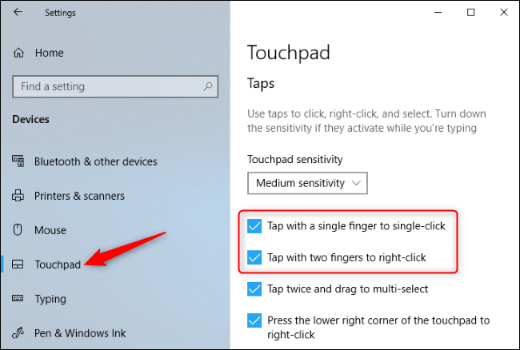
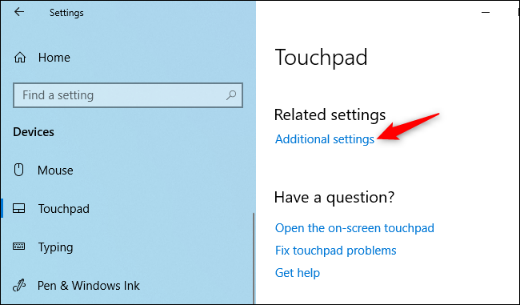
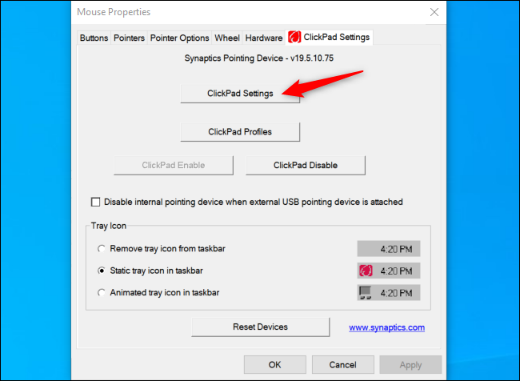
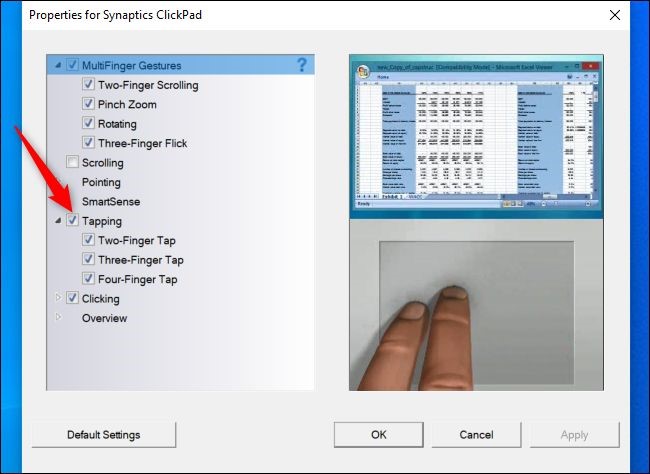
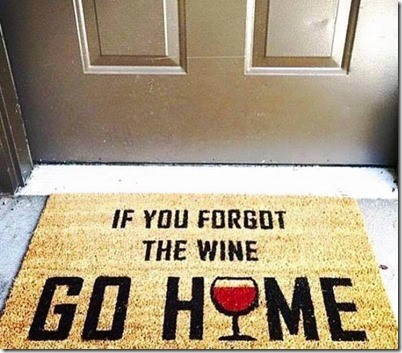
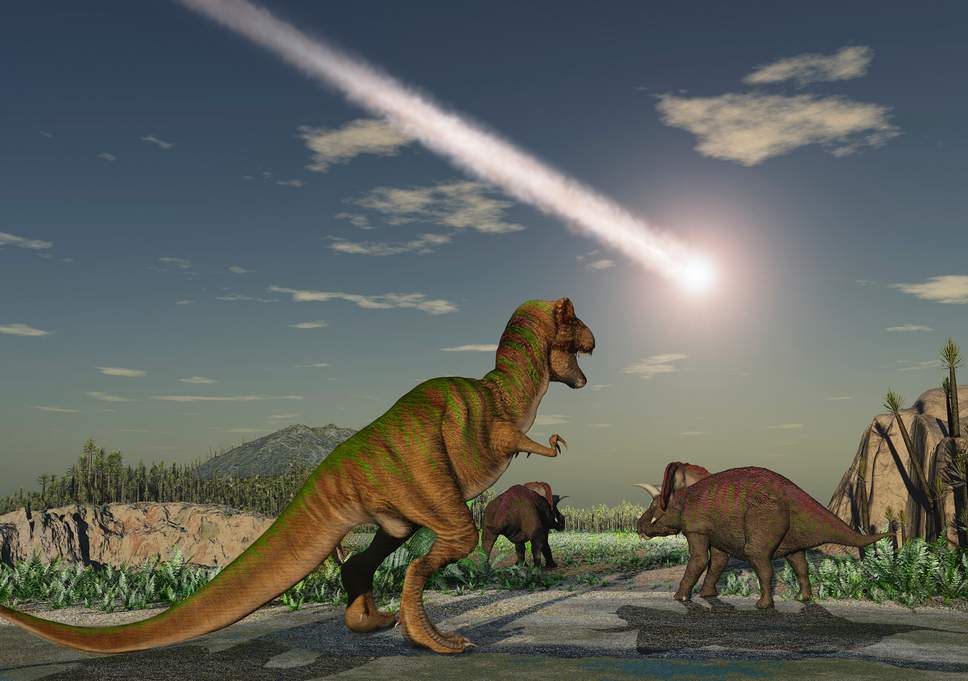

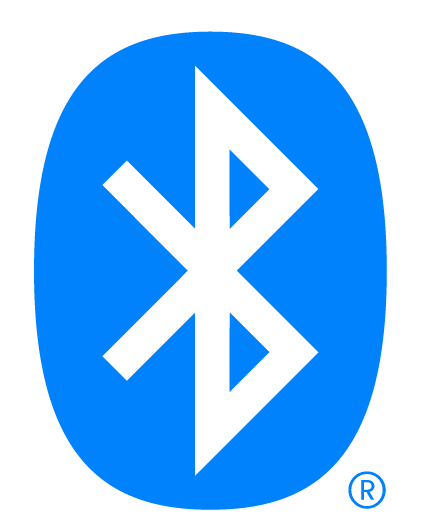
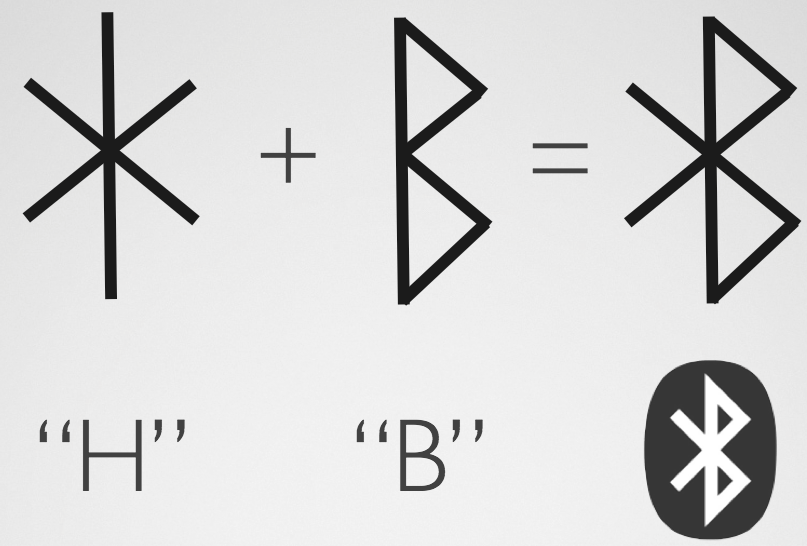
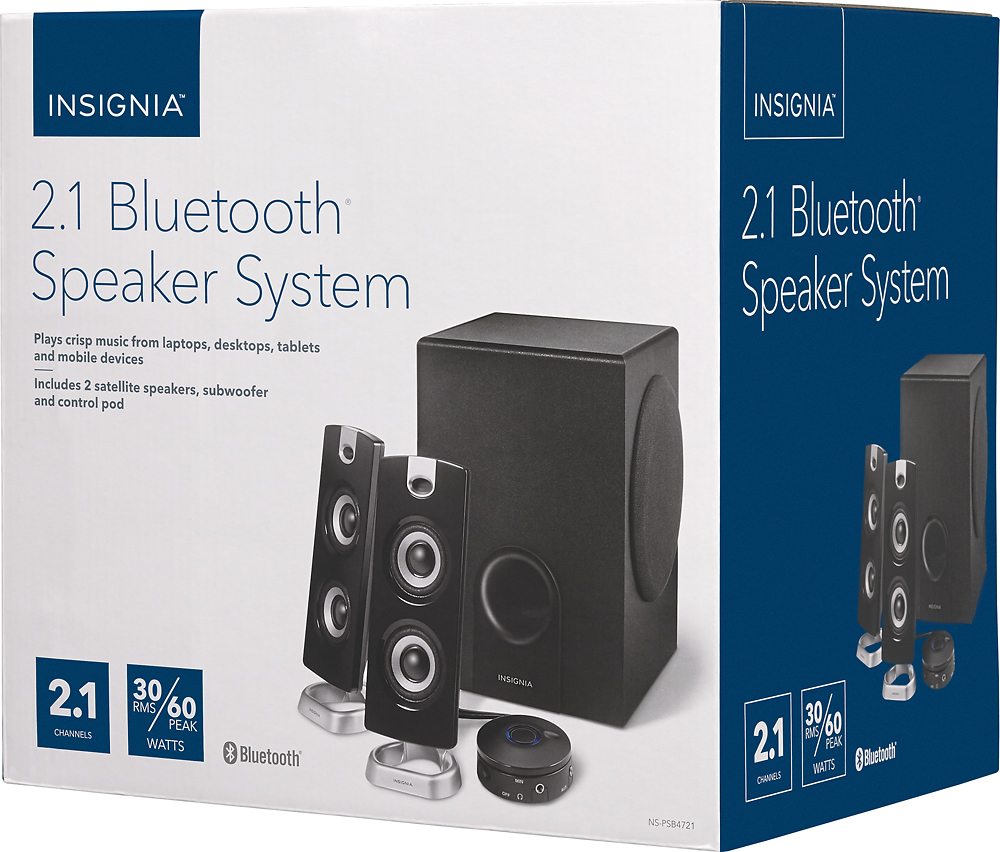 piconet to talk between the main unit and peripheral. The cordless telephone
has one Bluetooth transmitter in the base and another in the handset. The
manufacturer has programmed each unit with an address that falls into a
range of addresses it has established for a particular type of device. When
the base is first turned on, it sends out radio signals asking for a
response from any units with an address in a particular range. Since the
handset has an address in the range, it responds, creating a tiny network.
Now, even if one of these devices should receive a signal from another
system, it will ignore it because it's not from within the network.
piconet to talk between the main unit and peripheral. The cordless telephone
has one Bluetooth transmitter in the base and another in the handset. The
manufacturer has programmed each unit with an address that falls into a
range of addresses it has established for a particular type of device. When
the base is first turned on, it sends out radio signals asking for a
response from any units with an address in a particular range. Since the
handset has an address in the range, it responds, creating a tiny network.
Now, even if one of these devices should receive a signal from another
system, it will ignore it because it's not from within the network.